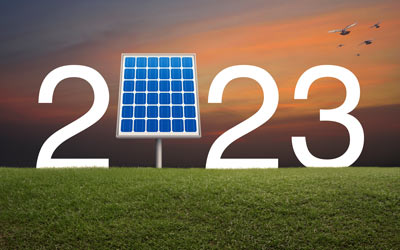In 2023, the realm of solar technology has witnessed remarkable advancements, propelling the renewable energy sector into a new era of efficiency and sustainability. These breakthroughs are not only enhancing the performance of solar panels but also addressing longstanding challenges, making solar power a more accessible and viable option for a broader range of applications.
One significant stride in solar technology is the emergence of next-generation photovoltaic materials. Traditional silicon-based solar cells have dominated the market, but researchers and engineers are now exploring alternative materials that promise higher efficiency and lower production costs. Perovskite solar cells, in particular, have garnered attention for their exceptional light-absorbing properties and ease of fabrication. The flexibility of perovskite materials allows for the creation of lightweight and adaptable solar panels that can be integrated into a variety of surfaces.
Furthermore, advancements in tandem solar cells are pushing the efficiency boundaries. Tandem cells combine multiple layers of solar materials with varying absorption spectra, allowing them to capture a broader range of sunlight wavelengths. This approach has led to impressive gains in efficiency, with some tandem solar cells surpassing the 30% efficiency threshold. As a result, the overall energy output of solar installations is increasing, making solar power more competitive with traditional energy sources.
Innovations in solar panel design are also shaping the landscape of 2023’s solar technology. Bifacial solar panels, capable of capturing sunlight from both sides, have gained popularity. These panels can harvest reflected sunlight from surfaces such as snow, water, or adjacent buildings, significantly boosting their overall energy yield. Improved tracking systems, utilizing artificial intelligence and advanced sensors, are being integrated into solar installations to optimize the alignment of panels with the sun’s position throughout the day, further maximizing energy production.
Energy storage solutions are playing a pivotal role in enhancing the reliability and efficiency of solar power systems. In 2023, the development of high-capacity and longer-lasting batteries is providing a means to store excess energy generated during peak sunlight hours for use during periods of low sunlight or at night. Advanced lithium-ion and solid-state battery technologies are becoming more cost-effective and sustainable, addressing the intermittent nature of solar energy and contributing to the goal of achieving round-the-clock renewable power.
The integration of smart grid technologies is another key trend in 2023, facilitating the seamless incorporation of solar energy into existing power infrastructures. Smart grids enable real-time communication between energy producers and consumers, allowing for better demand-response management and the efficient distribution of solar-generated electricity. This technology not only enhances grid reliability but also promotes the decentralization of energy production, empowering communities to generate and manage their renewable energy sources.
In the realm of solar technology, 2023 is witnessing a convergence of innovation and practicality. The advancements in materials, design, storage, and grid integration are collectively driving the solar industry towards a future where clean, renewable energy plays a central role in meeting the world’s power needs. As these breakthroughs continue to unfold, the promise of a more sustainable and environmentally conscious energy landscape becomes increasingly attainable, marking 2023 as a pivotal year in the evolution of solar technology.

